Abstract
Middle-aged runners form an appreciable number of those engaged in marathon running. They tend to have above average intelligence, high socioeconomic status, and better levels of aerobic fitness than sedentary members of the same age group. “Too much too soon” is the commonest cause of injury. Training before a marathon should last 18 months to two years. Middle-aged runners tend to experience fewer injuries than other marathoners. However, relatively minor complaints will be disastrous to them if they have to stop running. Injuries can occur from lack of warm up exercises, environmental factors such as weather, poor street lighting, carbon monoxide from car exhausts, etc. Some contraindications to marathon running are: poorly controlled diabetes, recent acute pulmonary disease, active rheumatoid arthritis, and recent cardiac conditions. Finishing a marathon involves both agony and ecstasy.
Full text
PDF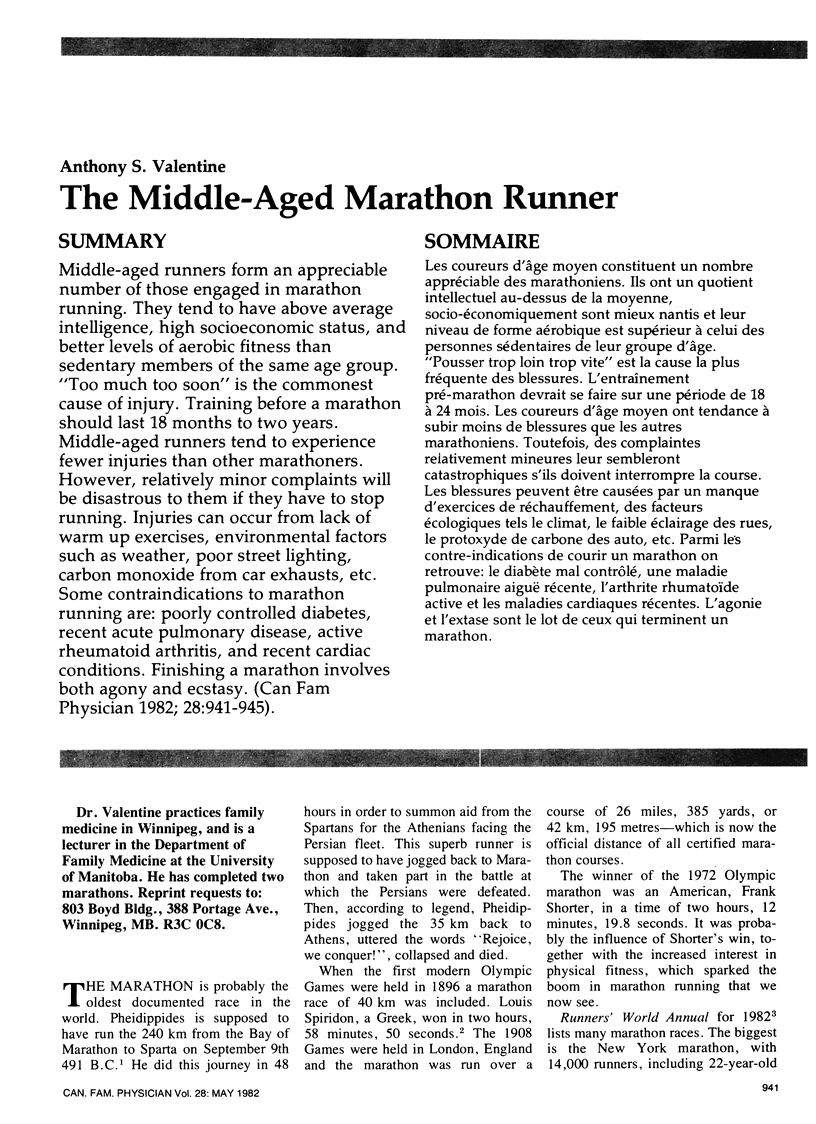
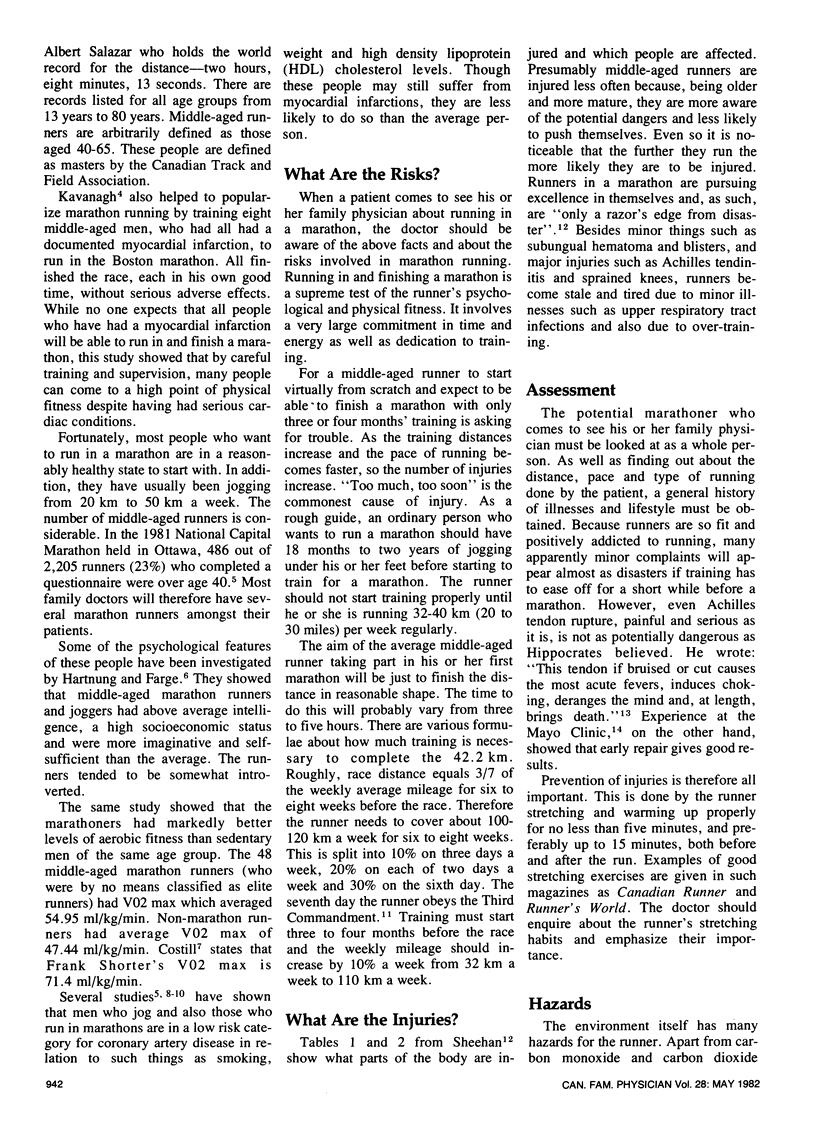
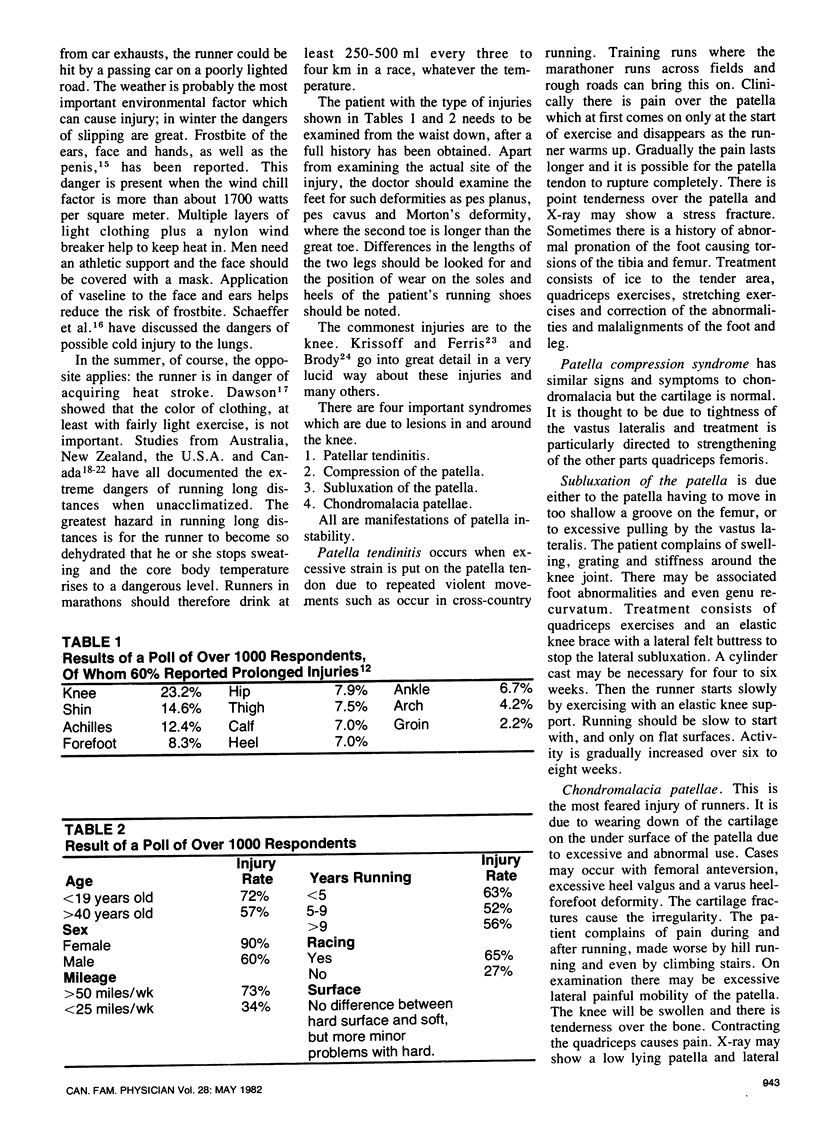
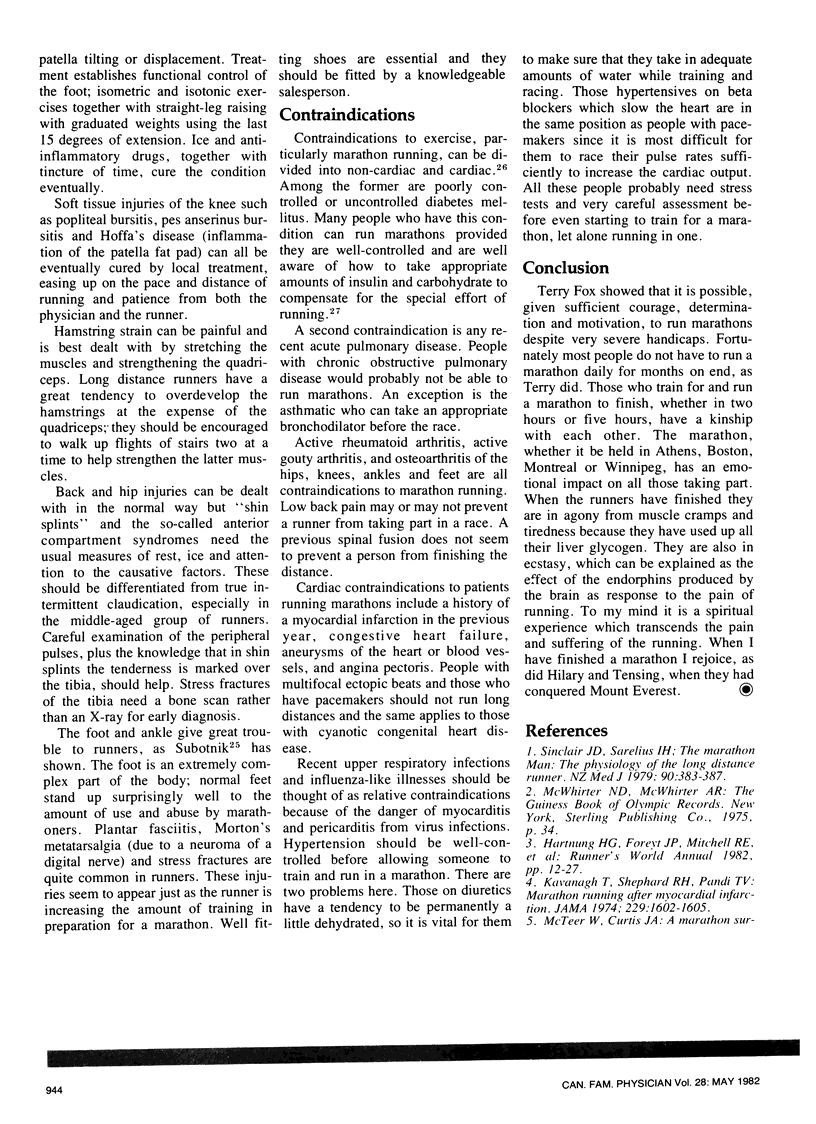
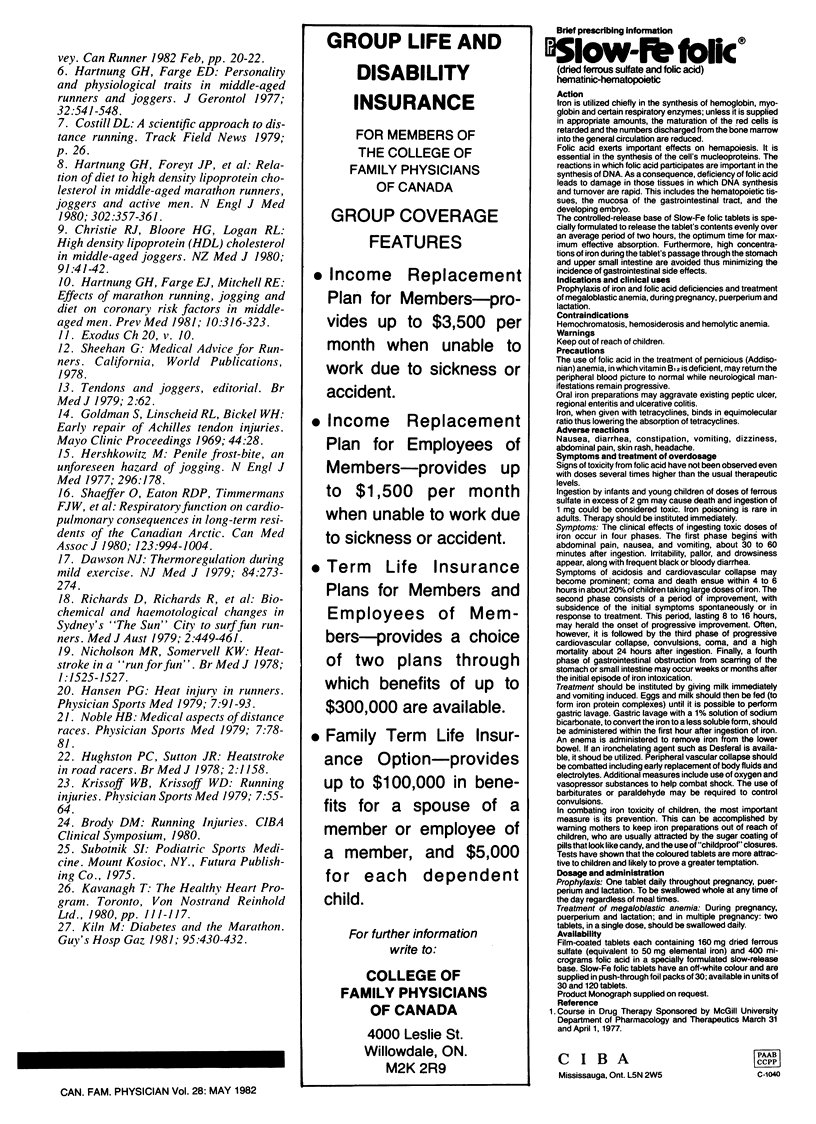
Selected References
These references are in PubMed. This may not be the complete list of references from this article.
- Dawson N. J. Thermoregulation during mild exercise. N Z Med J. 1976 Oct 13;84(573):273–274. [PubMed] [Google Scholar]
- Goldman S., Linscheid R. L., Bickel W. H. Disruptions of the tendo Achillis: analysis of 33 cases. Mayo Clin Proc. 1969 Jan;44(1):28–35. [PubMed] [Google Scholar]
- Hartung G. H., Farge E. J., Mitchell R. E. Effects of marathon running, jogging, and diet on coronary risk factors in middle-aged men. Prev Med. 1981 May;10(3):316–323. doi: 10.1016/0091-7435(81)90021-9. [DOI] [PubMed] [Google Scholar]
- Hartung G. H., Farge E. J. Personality and physiological traits in middle-aged runners and joggers. J Gerontol. 1977 Sep;32(5):541–548. doi: 10.1093/geronj/32.5.541. [DOI] [PubMed] [Google Scholar]
- Hartung G. H., Foreyt J. P., Mitchell R. E., Vlasek I., Gotto A. M., Jr Relation of diet to high-density-lipoprotein cholesterol in middle-aged marathon runners, joggers, and inactive men. N Engl J Med. 1980 Feb 14;302(7):357–361. doi: 10.1056/NEJM198002143020701. [DOI] [PubMed] [Google Scholar]
- Kavanagh T., Shephard R. H., Pandit V. Marathon running after myocardial infarction. JAMA. 1974 Sep 16;229(12):1602–1605. [PubMed] [Google Scholar]
- Nicholson M. R., Somerville K. W. Heat stroke in a "run for fun". Br Med J. 1978 Jun 10;1(6126):1525–1526. doi: 10.1136/bmj.1.6126.1525-a. [DOI] [PMC free article] [PubMed] [Google Scholar]
- Richards D., Richards R., Schofield P. J., Ross V. Biochemical and haematological changes in Sydney's the Sun City-to-Surf fun runners. Med J Aust. 1979 Nov 3;2(9):449–453. doi: 10.5694/j.1326-5377.1979.tb125752.x. [DOI] [PubMed] [Google Scholar]
- Schaefer O., Eaton R. D., Timmermans F. J., Hildes J. A. Respiratory function impairment and cardiopulmonary consequences in long-time residents of the Canadian Arctic. Can Med Assoc J. 1980 Nov 22;123(10):997–1004. [PMC free article] [PubMed] [Google Scholar]
- Sinclair J. D., Sarelius I. H. The marathon man: the physiology of the long-distance runner. N Z Med J. 1979 Nov 14;90(647):383–387. [PubMed] [Google Scholar]


